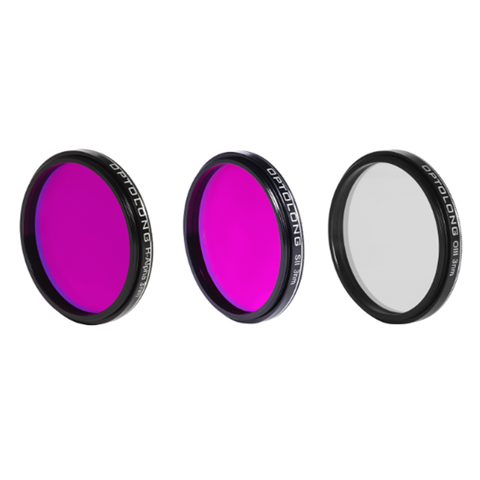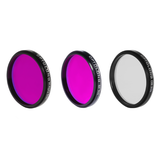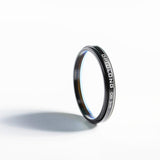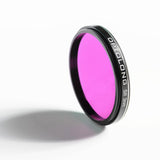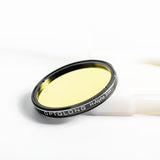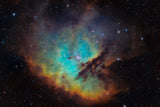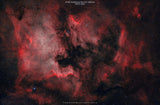![]() Qualifies for Free Ground Economy Shipping (CONUS Only)
Qualifies for Free Ground Economy Shipping (CONUS Only)
Optolong SHO-3nm filter kit includes SII3nm, H-Alpha3nm, and OIII3nm narrow band filters, generally working with astronomical monochrome cooling CCD and modified DSLR imaging in each single-channel. Corresponding with RGB channel (HA, OIII, SII), photographers can process Hubble images by astronomical post processing software.
Optolong SHO-3nm Narrowband Filters Introduction
Optolong SHO-3nm filter kit includes SII 3nm, H-Alpha 3nm, and OIII 3nm narrow band filters, generally working with astronomical monochrome cooling CCD and modified DSLR imaging in each single-channel. Corresponding with RGB channel (HA, OIII, SII), photographers can process Hubble images by astronomical post processing software.
Extra narrowband SIICCD3nm filter (Sulful II for CCD) is designed for nebula observation allowing 3nm bandwidth of light centered on a wavelength of 672nm through, and reducing the transmission of certain wavelengths of light, specifically those produced by artificial light including mercury vapor, and both high and low pressure sodium vapor lights and the unwanted natural light caused by neutral oxygen emission in our atmosphere (i.e. skyglow)
H-Alpha 3nm filter is the popular narrowband filter allowing 3nm bandwidth of light centered on a wavelength of 656nm through, and reducing the transmission of certain wavelengths of light, specifically those produced by artificial light including mercury vapor, and both high and low pressure vapor lights and unwanted natural light caused by neutral oxygen emission in our atmosphere (i.e.skyglow). Better choice of narrowband H-Alpha astrophotographer filter for highest contrast and revealing subtle nebula details.
Extra narrowband OIII-CCD 3nm filter is designed for nebula observation allowing 3nm bandwidth of light centered on a wavelength of 500nm through, which corresponds to OIII emission line, and reducing the transmission of certain wavelengths of light, specifically those produced by artificial light including mercury vapor, and both high and low pressure sodium vapor lights and the unwanted natural light caused by neutral oxygen emission in our atmosphere (i.e.skyglow).
OIII emits 495.9nm and 500.7nm and it is a blue-green colored filter. Many of images of planetary nebula and supernoval remnants are taken only with H-Alpha and OIIII filters. They show great structural details, but have natural colors, looking like an RGB image.
Features:
- Give you higher contrast and greater detailed viewing;
- Decrease background noise and improve the contrast of objects;
- Increase the faint nebula signal and make i tto be brightness;
- With narrow band fitlers kit, you are able to process a hubble image;
- Through the optimization of the sustrate and upgrading of coating technology.
Reference Spectrum
How to read the chart?
▲The horizontal axis is the Wavelength in Nanometers(nm).
▲The vertical axis is transmission in %.
▲The BLUE line shows the transmission of OIII3nm.The H-Alpha 3nm line is showen in GREEN. And the SII 3nm filter line is shown in RED.
Coating Technology
·Multi-layers anti-reflection coating
·Non-cementing optical substrate coating
·Optolong filter adopts precision coating based on Ion-assisted deposition coating technology for durability and resistance to scratching, as well as stability on CWL(central wavelength) no deviation affected by temperature change.
·Planetary rotation system offers precision and homogeneity of coatings ensuring high value on transmission of pass-band and Optical density of off-band.
Optolong SHO-3nm Narrowband Filters Performance
Ⅱ. Pacman Nebula NGC 281 in the Hubble Palette © Luca Fornaciari Astrophotography
Pacman Nebula NGC 281 in the Hubble Palette
With the bad weather persisting I have taken these last few weeks to experiment with new way in the development of narrowband shots.
I'm happy because I'm defining a Hubble Palette that really feels mine, designing it a little at a time.
Narrowband is creative and fun because it allows us a good deal of freedom to experiment with the integration of the individual channels and the image you see is a developing version of what I am building.
The image was obtained with the new 3nm Optolong filters. If the bad weather will allow me a few nights I will soon finish my tests on these filters, but for now the impressions are really good.
240 minutes of Ha, 510 of OIII and 260 minutes of SII with the ASI 294MM and the Sky-Watcher 300 f/4.
I wish you a beautiful sunny day!
SETUP:
Sky-Watcher 300 f / 4 on EQ8R-Pro
ZWO ASI 294MM, Optolong Filters Ha 3nm, OIII 3nm, SII 3nm
Nebulose Nord America © Tommaso Massimo Stella
Test dei nuovi filtri Optolong Astronomy Filter H alpha e OIII a 3nm (non ancora sul mercato) sotto cieli inquinati (Bortle 8/9), con camera a colori e diametro limitato.
Elaborazione basica, senza considerare il colore delle stelle.
Purtroppo il meteo mi ha concesso circa 3 ore per canale, manca ancora l'SII per comporre l'Hubble palette, spero di poter terminare la prossima settimana.
Lights: 12x900s (Ha 3nm) + 20x600s (OIII 3nm)
Telescope: Takahashi FS-60CB + Reducer 0,72x
Camera: QHY 168C
Mount: Skywatcher AZ-EQ6 GT
Processing: DeepSkyStacker, PixInsight, Photoshop CC

